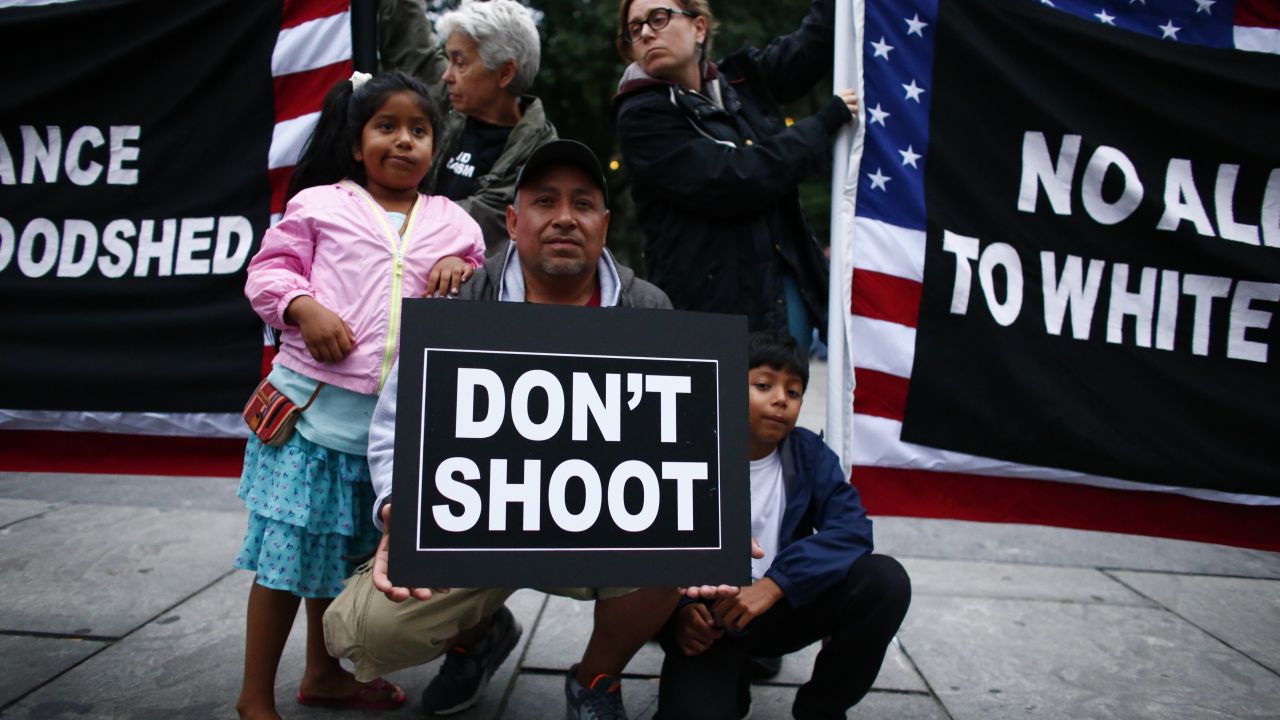
A man holds a banner during a protest in support of the Black Lives Matter movement in New York on July 09, 2016. (KENA BETANCUR/AFP/Getty Images)
This post originally appeared at Yes Magazine!
After being pulled over for a busted taillight on July 6, Philando Castile informed a Minnesota police officer at his window that he owned a gun and had a license to carry it. As he reached for his license and registration, his girlfriend and her 4-year-old daughter then watched as the police officer fired four shots into Castile’s body. He died in the driver’s seat.
Castile was one of
But research has existed for a while to show cities how to reduce racism and interrupt the violence.
Train for racial bias
Stereotypes about the criminality of black communities affect a police officer’s decision to shoot a suspect. That’s a fact. However, racial bias training can address the preconceptions and subsequent racially based brutality. After extensive training with a computer simulator in which the race of the suspect was unrelated to the presence of a weapon, a Florida State University study showed that officers were able to eliminate their biases. In a separate study, California officers also found that listening to the community and giving suspects time to explain their side of the story reduced compliance issues and increased cooperation.
Hire more female officers
Female officers are less likely to use excessive force, according to a National Center for Women in Policing report that looked at seven major US police departments. While women make up 12.7 percent of those departments, they only account for 5 percent of citizen complaints of excessive force. This also means that female officers cost their departments less, because they are less likely to be involved in litigation. The Los Angeles Police Department paid $63.4 million between 1990 and 1999 for lawsuits against male officers and only $2.8 million for those against female officers.
Match the racial diversity of community
Police departments rarely mirror the diversity of their communities. The New York Times reports that hundreds of police departments are 30 percent more white than the populations they serve. But the number of violent incidents drop drastically when the diversity of the force matches the diversity of its community, according to research from Columbia Law School. A call for this diversity goes back decades, points out Joscha Legewie, who conducted the research with Jeffrey Fagan. “Our findings indicate that in cities that are polarized, particularly where there might be more ethnic or racial tensions, a diverse police force might help reduce tensions,” Legewie said.
Open departments to research
Police departments need to open their records to researchers if they want to understand how to fix brutality, said Beatriz Magaloni, an associate professor of political science at Stanford. Magaloni studiespolice brutality in Rio de Janeiro, Brazil, where 5,132 civilians were killed by police between 2005 and 2014. While Rio is very different from the US, violence is likewise concentrated around poor and black communities. Her research introduced Magaloni to some of the most effective practices, such as peaceful policing of slums and providing salary incentives for reducing homicides rather than rewards for bravery — which contributed to a culture of violence.
Wear body cameras
Body cameras reduce complaints against police officers, University of South Florida researchers found in a study conducted with the Orlando Police Department. During one year, 46 Orlando officers were randomly assigned to wear body cameras while 43 did not. At the beginning, most officers were skeptical. But by the end, the majority acknowledged that body cameras positively influenced behavior, improved evidence collection and reduced civilian complaints. They agreed to continue wearing cameras.




